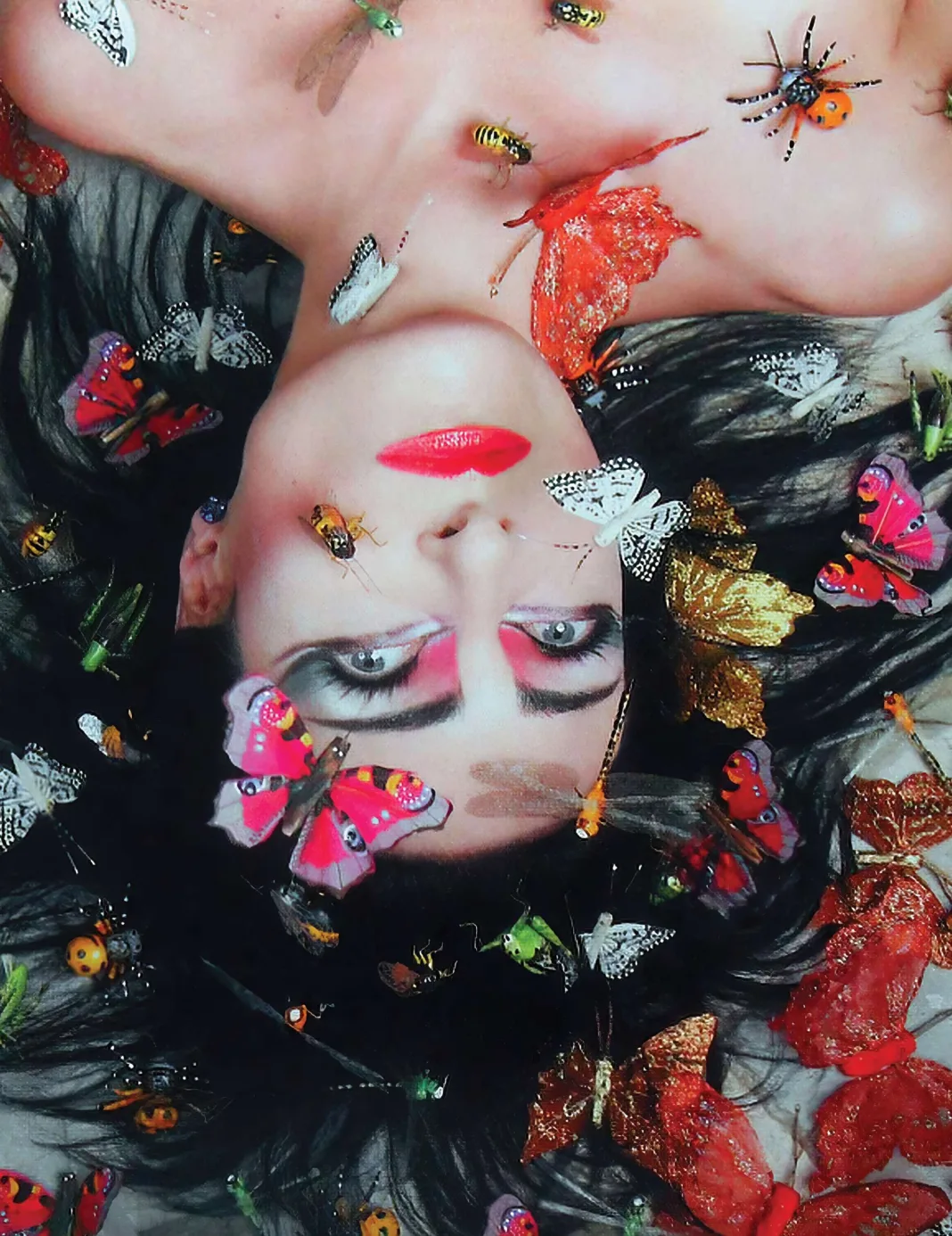Feature Image: Siouxsie Sioux, from the album Mantaray, 2007 | Vinyls / Alamy Stock Photo
I was once a little girl beside herself with excitement to walk down the aisle in a white lace dress to receive the various childhood sacraments. It was not even a decade later when I saw a video of Siouxsie Sioux sing “The Lord’s Prayer” and I had an epiphany. The Blessed Mother was not the mother of God after all.
Once I beheld the world of Siouxsie Sioux, my existence exploded into an aural confetti: waves of percussion and strings and preternatural sounds. I was enthralled by her presence—the perverted flapper dresses, lamé catsuits, the blackest of black hair, and intense eyes lined like Cleopatra. She was a force. She snarled, shrieked, and wailed about intoxicating subjects, from peepshows to voodoo dollies, her voice a virtual carnival ride. No one sang that way about those things, those dark-crafted beguiling metaphors. No one. She sang “Spellbound” and I was taken out of a soul crushing “Suburban Relapse.”
I didn’t adopt her style right away. I had willingly been suffocated by pastels, despite feeling that my heart was sheathed in black. I wore the colors that were consistent with my strident desire to be “normal” throughout most of my school days. But then I turned eighteen and moved to Greenwich Village for my freshman year of college, where I was able to break loose.
I immediately put up a Peepshow poster that I had found on 8th Street. It took up the entire tiny wall behind my bed. “Your goddess is Siouxsie Sioux,” my new roommate observed. “You’re such a ghastly Goth!” That shook me. I never thought about myself that way. It sounded like a compliment, but I wasn’t sure I liked it. Goth. Also, Siouxsie never liked the label, so I hated the label.
My first year in college was spent in thrift stores and clubs. I wore only vintage clothes, the more ancient and threadbare the better. My coat was an oversize fake lambswool number that I was certain had a deep dark past. My hair and nails were black, and I wore many large crucifixes and told off the norms who asked me if I was trying to look like Madonna.
When I returned to the confines of my parents’ home on Long Island that first summer, they were disturbed by my transformation. My very Catholic mother felt that rosaries were tools to grasp in prayer, not accessories to be worn around the neck in tangled layers upon layers. The secondhand clothes were definitely not appreciated. “We look like we can’t afford to buy you new clothing. Also, you look like you’re going to a funeral.” They argued about my black boots with very thick soles, laced up like corsets, tight on my calves. “Polio boots!” Mom swore. “No, they’re Frankenstein boots,” my father insisted.
Later, when I walked out of the house and crossed the street to get back to the city on the commuter railroad, my salvation, my mother stopped me. “Joi, you look like a prostitute.” My exposed garters, fishnet body suit, and bra were covered by a ripped velvet blazer that was two sizes too big and that I wore open because I wanted to show the world, or at least most of New York City, that I did not GAF. Meanwhile Dad tried logic. “That is how ladies of the night look, Joi.” “You should know,” I snarled back.
My sexuality was an excruciating concept, something intangible, not even a glimmer in the eye of the ether. I took solace in my belief that Siouxsie had long ago established that her clothing was not meant to attract the male gaze. In fact, I hated 99.9% of straight men, and their gaze was their own problem, I thought.
“Hey, freak,” the typically toxic Long Island dude would call out to me on the train, violent lust in his eyes. It was so easy to give him the finger. Siouxsie, a pioneering woman in punk rock, did not back down, nor would I. I credit her with my newly found fierce attitude at nineteen. I never would back down again.
Siouxsie Sioux had a difficult adolescence, and this fueled her music. Her music resonates with the damaged child in all of us. Easy lives do not make for great art. Who doesn’t know this? When I was fully shrugging off my academic constraints and committing myself to creative pursuits at the age of twenty-one, I realized Siouxsie was the soundtrack to my life. I once did a performance piece to “Voodoo Dolly” for a graduate school project. While I may now look back on that as cringy and self-indulgent, I also know that such experimentation was crucial to my development as a creative person.
In my years of attending live shows, I’ve seen Siouxsie in all her incarnations the most, whether with the Banshees or the Creatures. I barely go to shows anymore, but I likely would have braved the height of the pandemic to see her again. Always Siouxsie. Til the last beat of my heart …
Follow Joi Brozek on Instagram @joidarling.

































